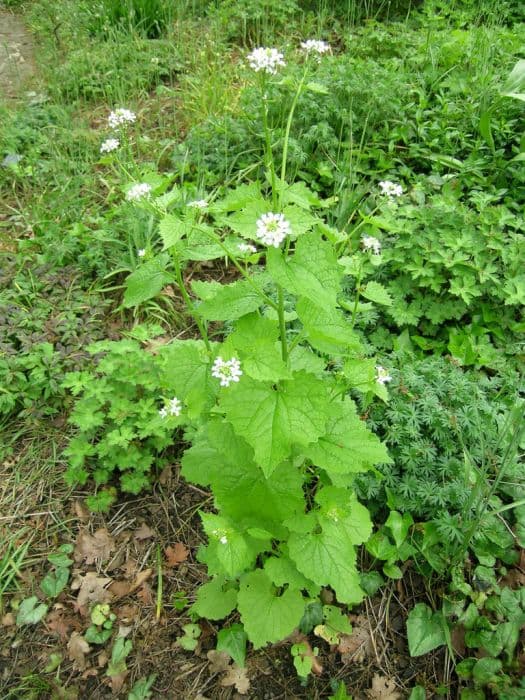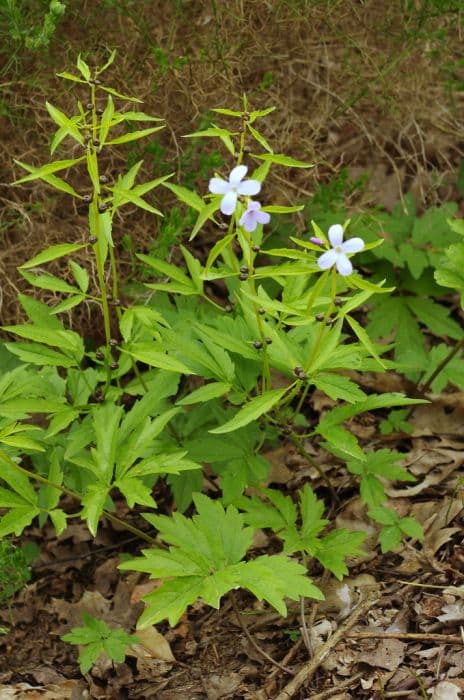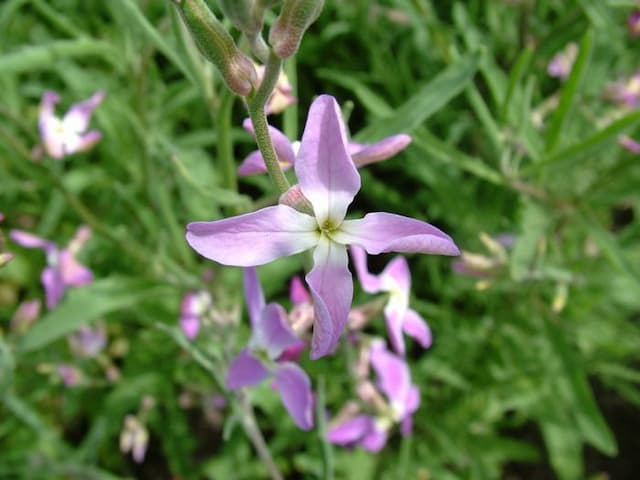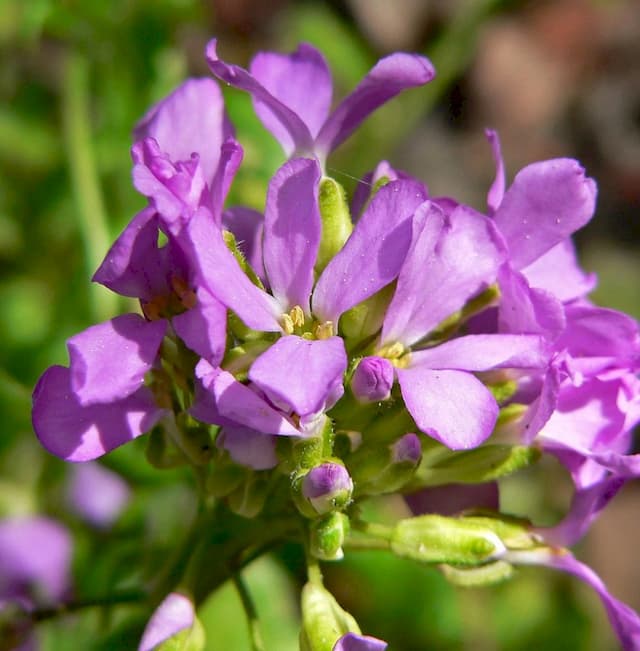Candytuft Iberis sempervirens 'Fischbeck'

ABOUT
Iberis sempervirens 'Fischbeck', commonly known as perennial candytuft, is a decorative evergreen plant with a dense mat-forming habit. It boasts glossy, dark green foliage that remains attractive throughout the year. The leaves are small, oblong, and slightly elongated with a leathery texture, typically arranged in opposing pairs along the stems. During its blooming period in spring and sometimes into early summer, perennial candytuft produces clusters of vibrant, pure white flowers. These flowers are small and four-petaled, forming a striking contrast against the dark foliage. The blooms are profuse and can cover the plant so heavily that they almost completely obscure the leaves beneath, creating a snow-like effect in the garden. Perennial candytuft is appreciated for its longevity and the touch of brightness it adds to landscaping, making it a favored choice for rock gardens, borders, and as a ground cover. Its evergreen nature ensures visual interest in the garden even outside the flowering season, while the flowers are known to attract butterflies and other pollinators.
About this plant
 Names
NamesFamily
Brassicaceae
Synonyms
Evergreen Candytuft, Perennial Candytuft
Common names
Iberis sempervirens.
 Toxicity
ToxicityTo humans
The plant commonly referred to as Candytuft is generally considered non-toxic to humans. However, as with many plants, individual allergic reactions or sensitivities are always possible. For most people, there should be no toxic consequences of ingesting any part of the Candytuft plant. Always exercise caution and avoid eating any plant material unless you are certain it is safe for consumption.
To pets
Candytuft is also generally considered non-toxic to pets. This means that it should not cause any severe toxic reactions if ingested by animals such as cats and dogs. However, it is always prudent to prevent pets from eating ornamental plants as they can sometimes cause mild gastrointestinal upset due to the novelty for the pet's digestive system or potential individual allergies.
 Characteristics
CharacteristicsLife cycle
Perennials
Foliage type
Evergreen
Color of leaves
Green
Flower color
White
Height
1 feet (30 cm)
Spread
1 feet (30 cm)
Plant type
Shrub
Hardiness zones
3
Native area
Mediterranean
Benefits
 General Benefits
General Benefits- Easy to Grow: The plant is known for being easy to care for, making it an excellent choice for novice gardeners.
- Drought Tolerant: Once established, it can handle periods of drought, which is beneficial in water-scarce regions.
- Low Maintenance: It generally requires little maintenance, which is time-saving for gardeners.
- Evergreen: Its foliage remains green throughout the year, providing continuous aesthetic appeal.
- Ground Cover: Its low-growing habit makes it an ideal ground cover, suppressing weeds and covering bare spots.
- Attracts Pollinators: The flowers attract bees and butterflies, supporting local ecosystems.
- Disease Resistant: The plant has natural resistance to many common garden pests and diseases.
- Seasonal Blooms: It offers bright white flowers in the spring, adding seasonal interest to garden spaces.
- Rock Garden Suitability: The plant is well-suited for rock gardens due to its tolerance for poor soil and drainage.
- Edging Plant: It can be used as edging along paths and garden beds due to its compact growth habit.
- Deer Resistant: It is not favored by deer, making it a good choice for areas where deer browsing is a problem.
 Medical Properties
Medical PropertiesThis plant is not used for medical purposes.
 Air-purifying Qualities
Air-purifying QualitiesThis plant is not specifically known for air purifying qualities.
 Other Uses
Other Uses- Iberis sempervirens, commonly known as Candytuft, can serve as a natural insect attractant, drawing beneficial bugs like bees and butterflies to the garden, which pollinate other plants and support a healthy ecosystem.
- Candytuft can be used in rock gardens due to its drought tolerance and ability to thrive in well-drained, rocky soils, thus stabilizing the soil and providing ground cover.
- The plant is suitable for creating borders along walkways or flower beds, providing a low, evergreen hedge throughout the year.
- Due to its compact size and mat-forming habit, Candytuft is used to fill spaces between stepping stones, softening hard landscapes and adding color.
- It is occasionally utilized in sensory gardens for its rich texture and lovely white blooms that can be both visually striking and pleasantly fragrant.
- Candytuft's dense foliage can be used to suppress weeds, as it forms a thick mat that inhibits the growth of unwanted plants.
- The plant’s ability to thrive in coastal conditions makes it useful for seaside gardens where it can withstand salt spray and sandy soils.
- When dried, the flowers of Candytuft can be used in floral arrangements, adding a delicate touch to bouquets and indoor decorations.
- Candytuft can be used in green roofing, where its low growth and hardiness contribute to an ecological, insulative, and aesthetic roof coverage.
- This plant can also serve as a living mulch, conserving soil moisture and providing year-round interest due to its evergreen leaves.
Interesting Facts
 Feng Shui
Feng ShuiThe Candytuft is not used in Feng Shui practice.
 Zodiac Sign Compitability
Zodiac Sign CompitabilityThe Candytuft is not used in astrology practice.
 Plant Symbolism
Plant Symbolism- Innocence: The Iberis sempervirens, commonly known as Candytuft, often symbolizes innocence due to its pure white color, evoking a sense of freshness and clean slates.
- Indifference: In some historical contexts, Candytuft has been used to convey apathy or indifference, possibly because it can grow in poor soils and seems content in harsh conditions.
- Beauty: The delicate flowers of the Candytuft can also serve as a symbol of beauty, representing aesthetic appreciation and the enjoyment of nature's splendor.
- Stoicism: Candytuft's hardiness and ability to thrive in tough environments make it a symbol of stoicism and the ability to endure challenges with grace.
 Water
WaterCandytuft, the common name for Iberis sempervirens 'Fischbeck', should be watered deeply but infrequently to encourage a strong root system. Allow the top inch of soil to dry out before watering again, as over-watering can lead to root rot. In general, watering once a week with approximately one gallon of water per plant should suffice, adjusting for rainfall and temperature. During hot, dry periods, you might need to water twice a week, while in cooler seasons or in climates with regular precipitation, watering may be reduced. Always check the soil moisture before watering to avoid over-saturation.
 Light
LightCandytuft thrives in full sunlight to partial shade. The ideal spot for this plant is an area that receives at least 4 to 6 hours of direct sunlight daily, which will promote the best flowering. While it can tolerate some light shade, too much shade can result in fewer flowers and a leggy growth habit. Therefore, a south-facing or west-facing location is often ideal to provide ample sunlight for Candytuft.
 Temperature
TemperatureCandytuft is hardy and can tolerate a range of temperatures. It prefers to grow in conditions where daytime temperatures average between 60 to 75 degrees Fahrenheit. Although Candytuft can survive temperature dips down to 0 degrees Fahrenheit, it is best to protect the plant with mulch during extreme cold. For optimal growth, ensure the plant is not exposed to temperatures above 85 degrees Fahrenheit for prolonged periods.
 Pruning
PruningCandytuft should be pruned to maintain its shape and to encourage denser growth and more blooms. The best time to prune is immediately after it finishes flowering in the spring. Cut back the spent flower heads and about a quarter of the plant’s growth to keep it compact. Pruning every year or every other year is generally enough to keep Candytuft healthy and looking its best.
 Cleaning
CleaningNot needed
 Soil
SoilCandytuft thrives in well-draining soil with a mix of loam, sand, and compost, at a pH of 6.0 to 7.5. Aiming for neutral to slightly alkaline conditions is best for optimal growth.
 Repotting
RepottingCandytuft seldom needs repotting as it prefers being left undisturbed; it's typically repotted only when it outgrows its current space or every 2-3 years.
 Humidity & Misting
Humidity & MistingCandytuft is drought-tolerant and does well in average to dry humidity levels, without the need for high humidity environments.
 Suitable locations
Suitable locationsIndoor
Place Candytuft near a sunny window and water sparingly.
Outdoor
Plant in well-draining soil with full sun exposure.
Hardiness zone
3-9 USDA
 Life cycle
Life cycleIberis sempervirens 'Fischbeck', commonly known as Evergreen Candytuft, typically begins its life cycle with seed germination in the spring, given adequate conditions of light, moisture, and temperature. Once germinated, the seedlings develop into young plants and establish a root system. Over time, these young plants mature into a dense, evergreen clump of glossy, dark green leaves. In late spring to early summer, Evergreen Candytuft produces clusters of white or pale pink flowers that attract pollinators to the garden. After blooming, if seeds are allowed to form and are not deadheaded, they can be dispersed to initiate new plants, although reproduction is more commonly achieved through cuttings or division of the plant. Once established, it can live several years, weathering through winters and reblooming each season.
 Propogation
PropogationPropogation time
Spring-Summer
Propogation: Iberis sempervirens 'Fischbeck', commonly known as Evergreen Candytuft, is most commonly propagated through semi-hardwood cuttings. This is typically done in late summer. To propagate, a healthy non-flowering shoot is selected and a cutting of about 4 to 6 inches (approximately 10 to 15 centimeters) is taken. The lower leaves are removed, and the cut end is often dipped in a rooting hormone to encourage root development. The cutting is then planted in a mixture of peat and perlite or a well-draining potting mix. It should be kept under conditions with high humidity and indirect light until roots have developed, after which it can be transplanted to its final location.








